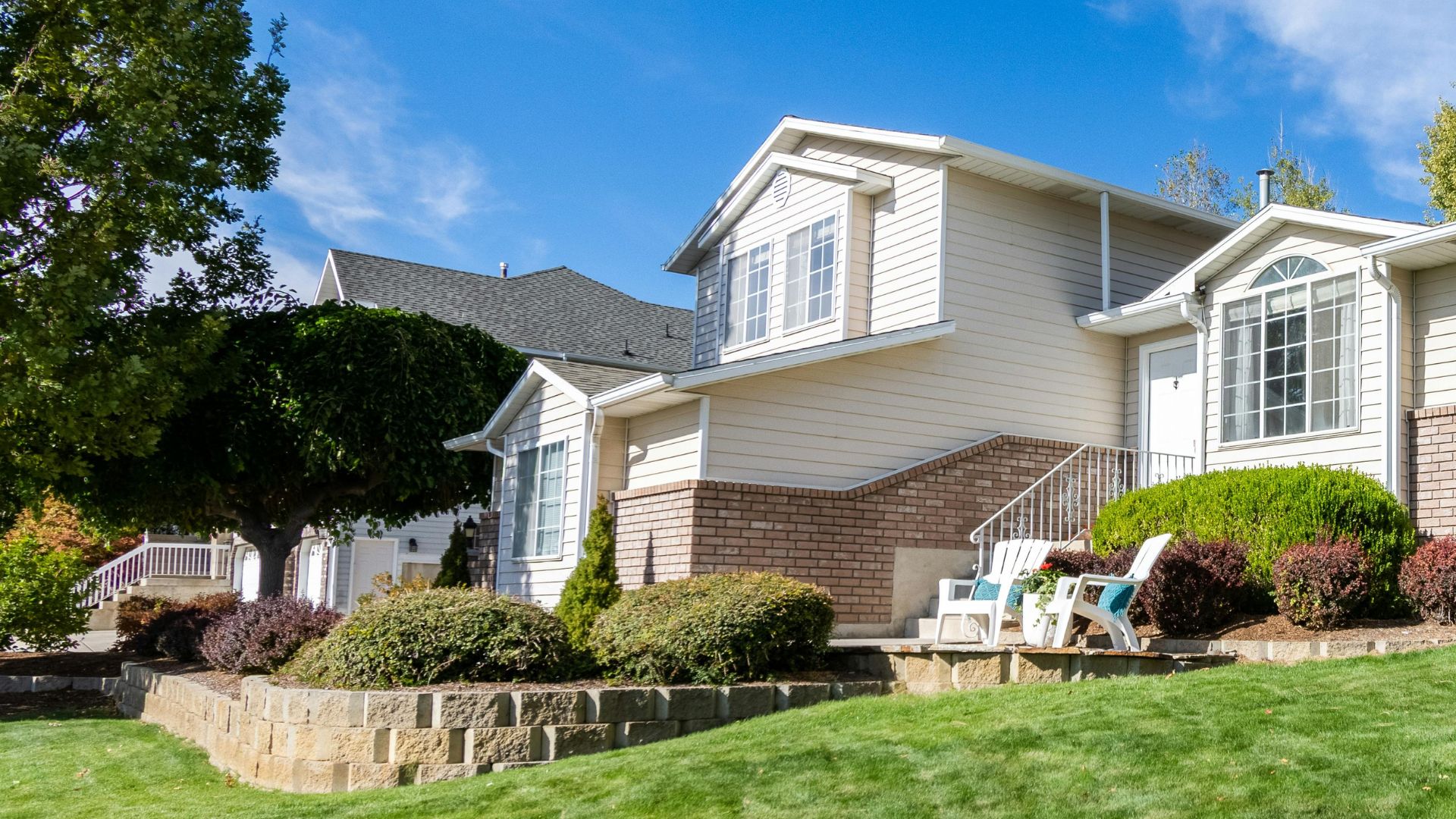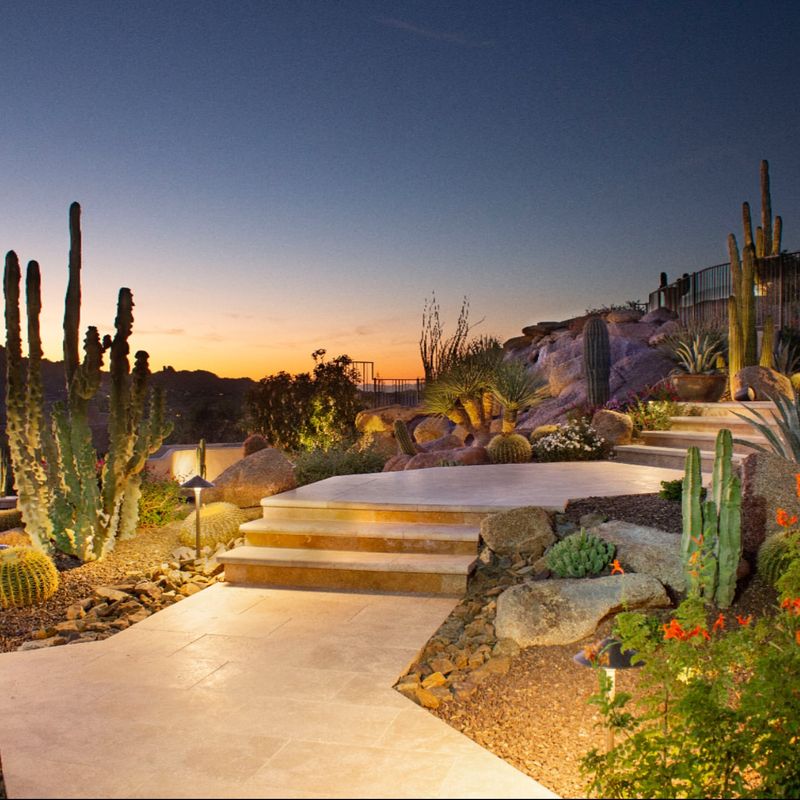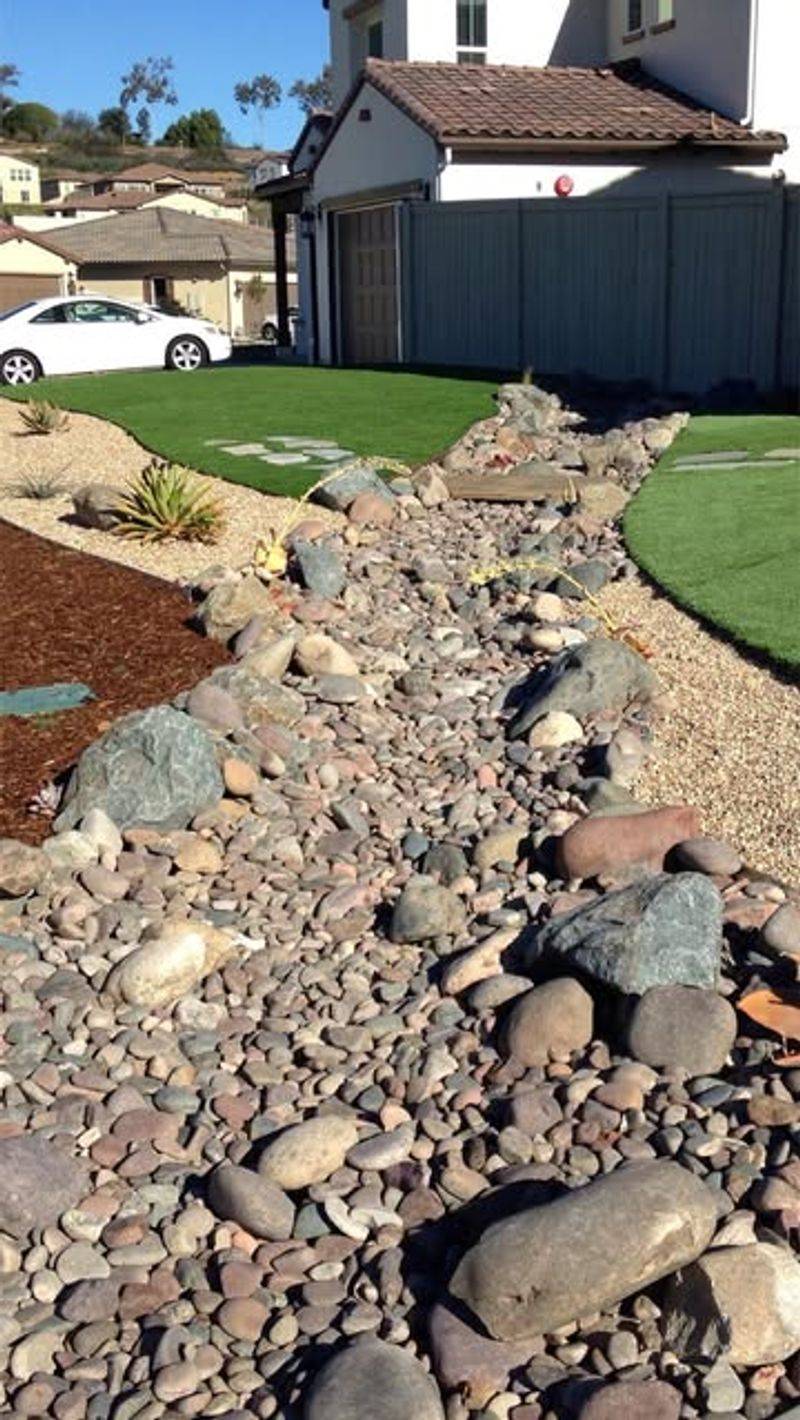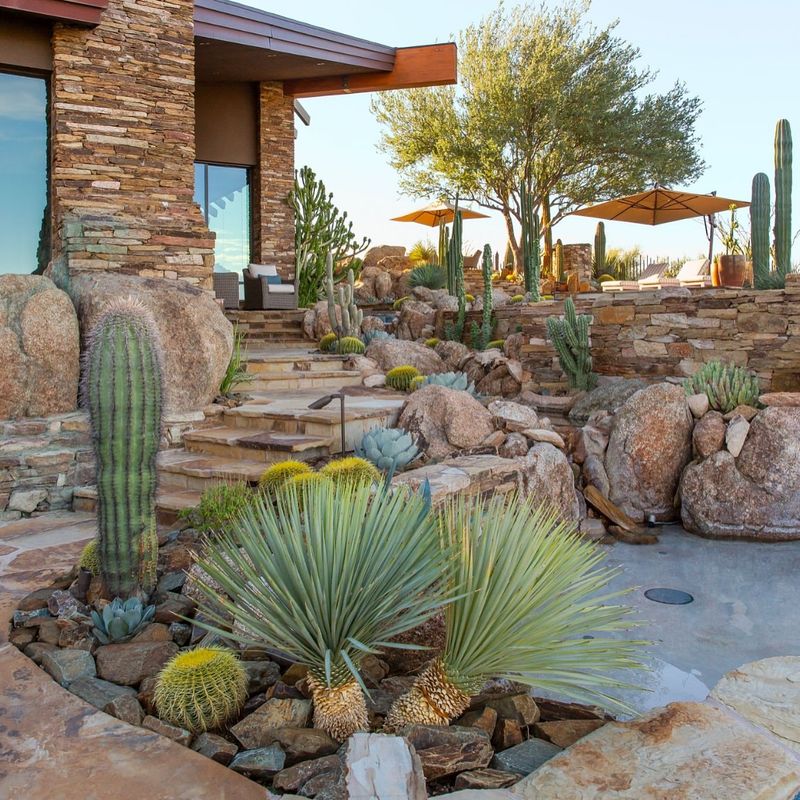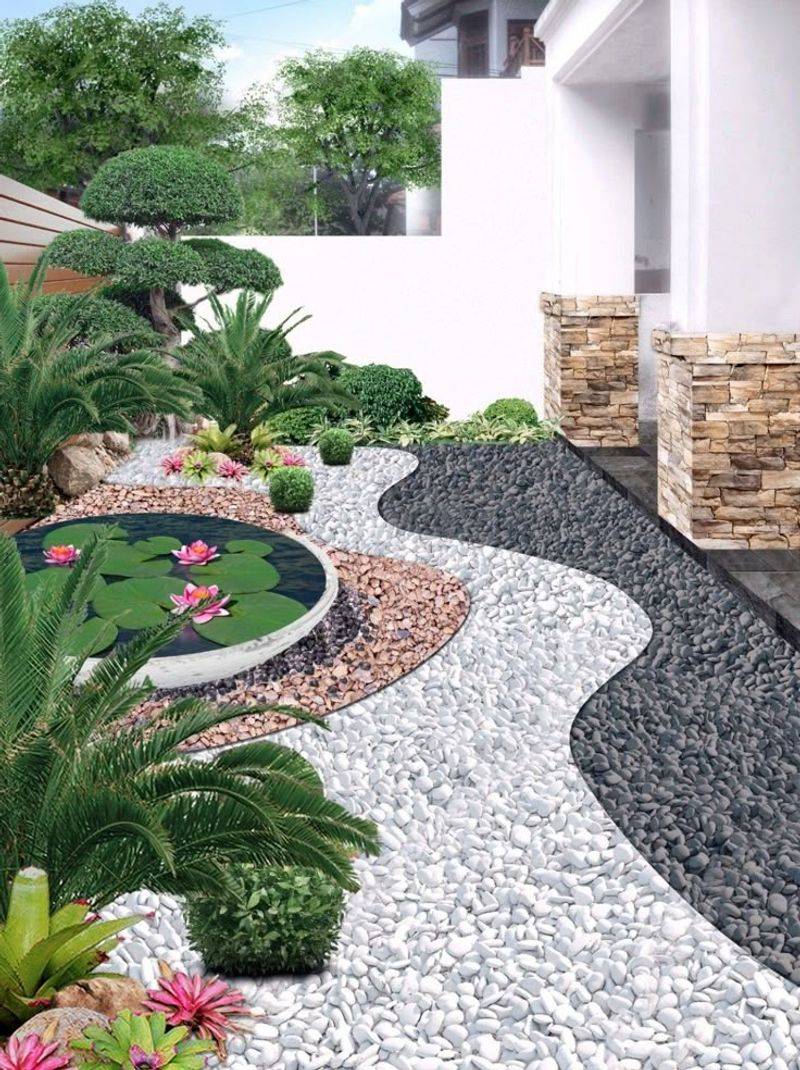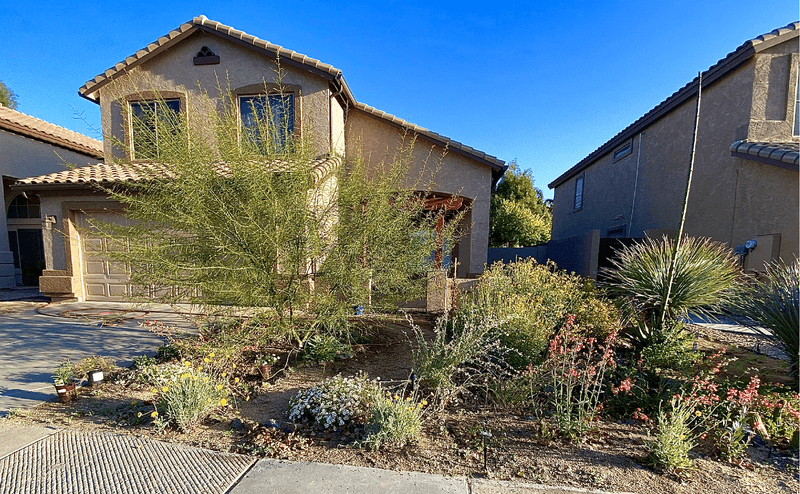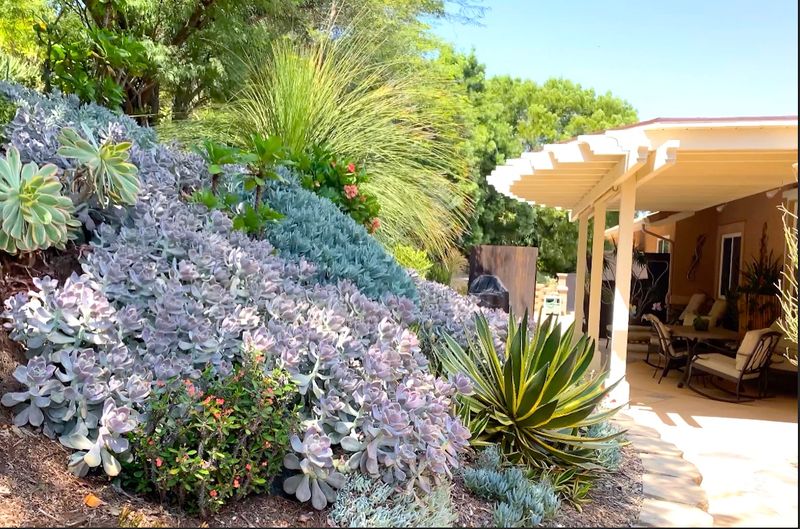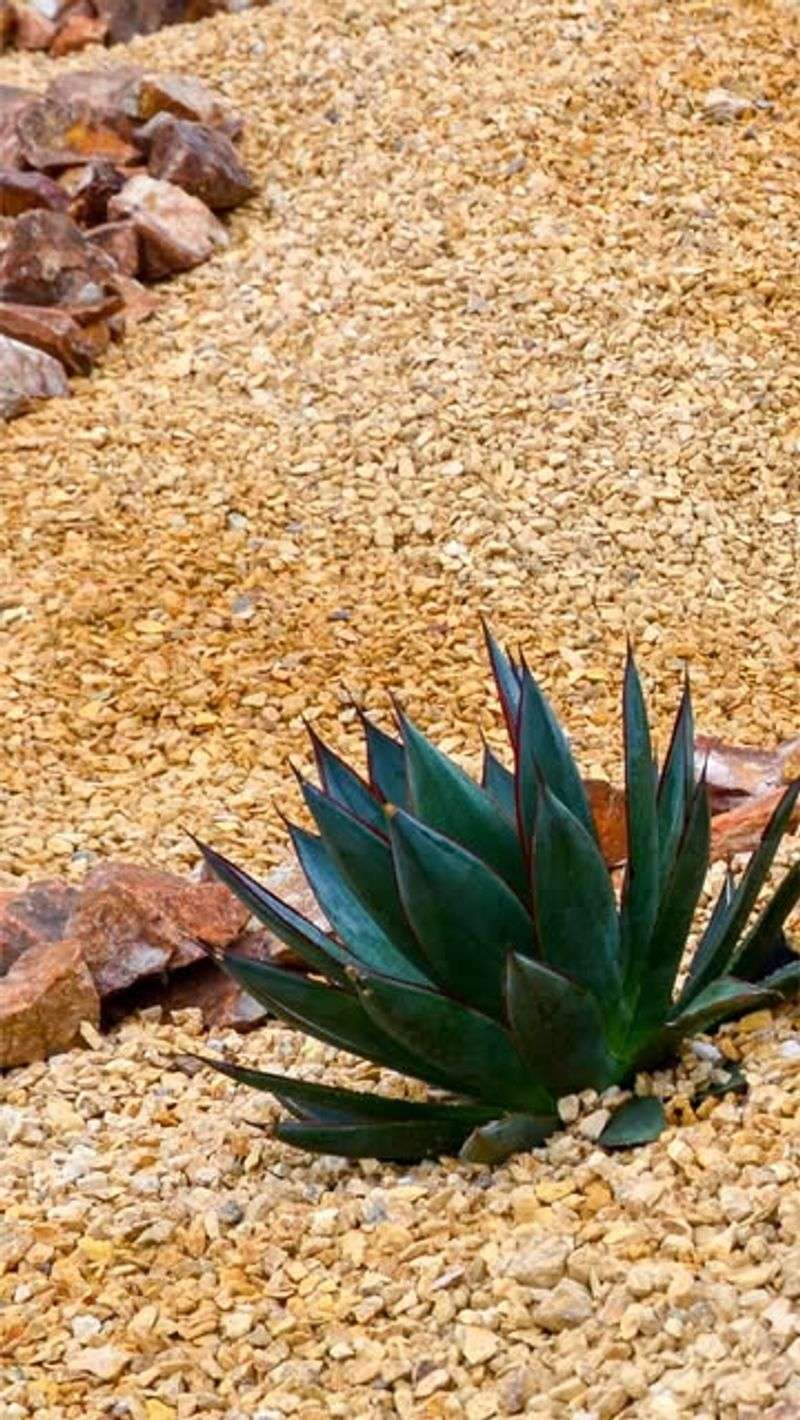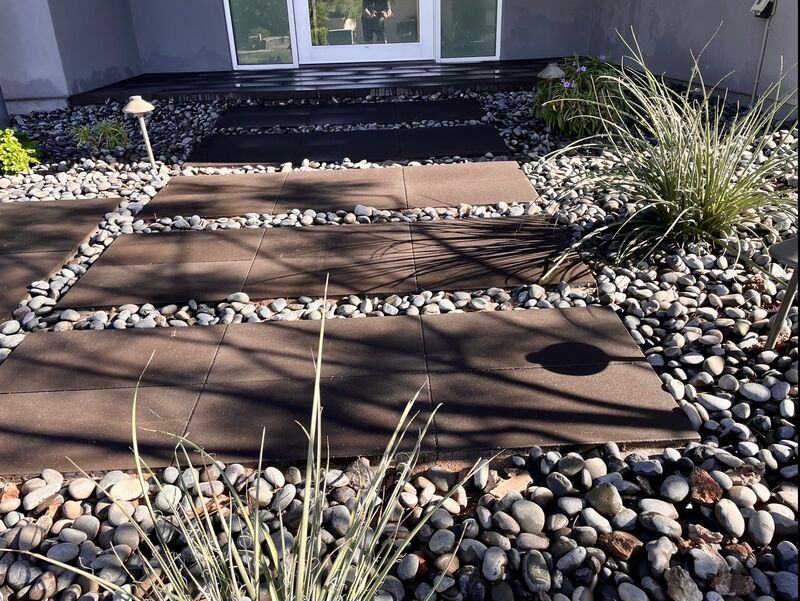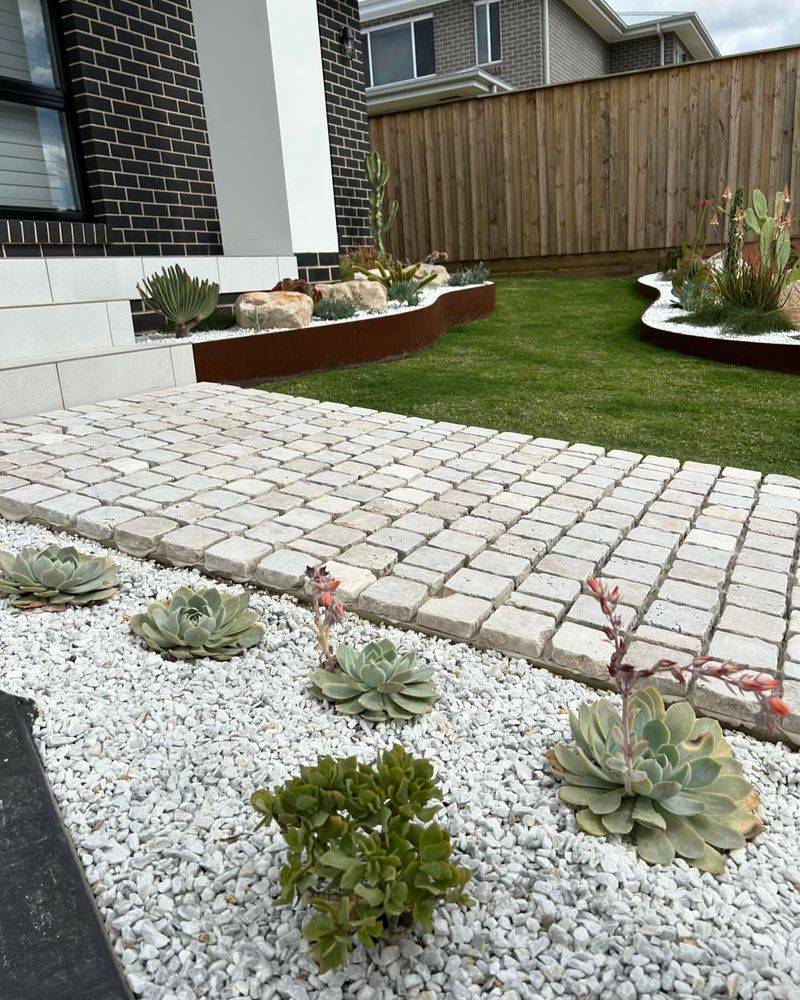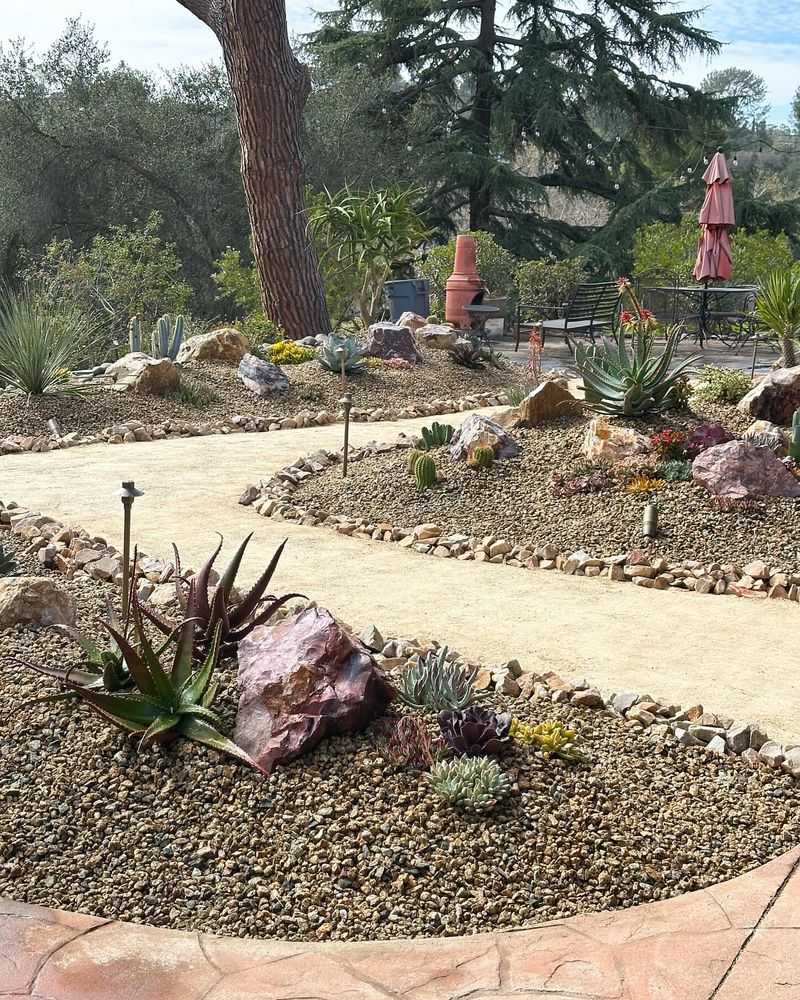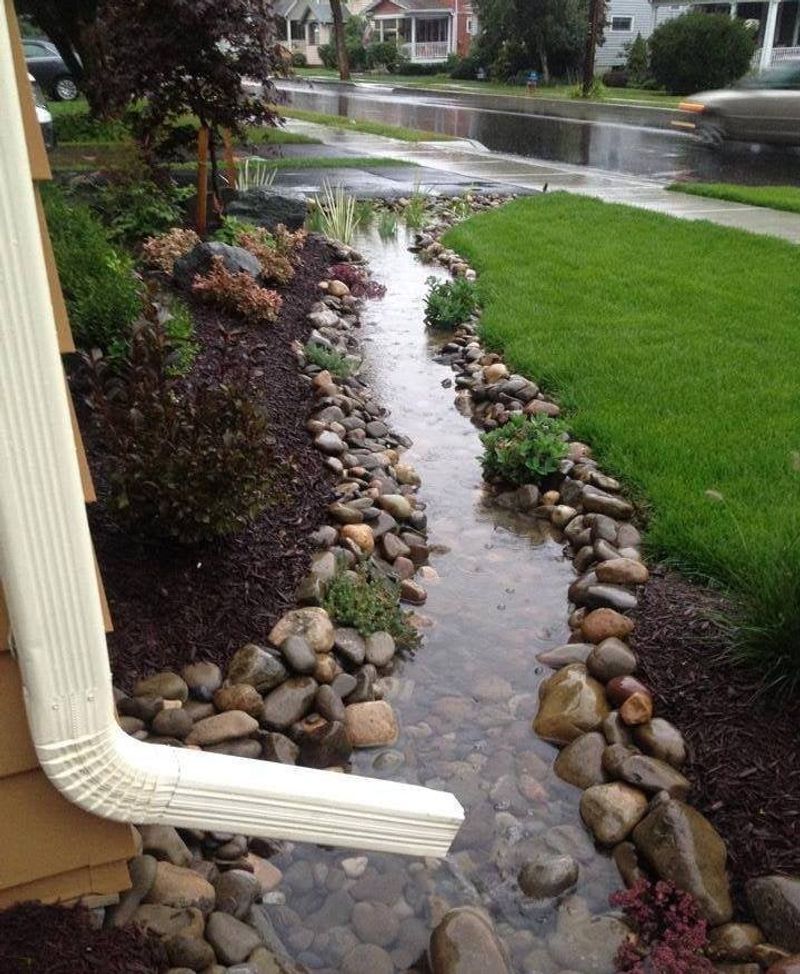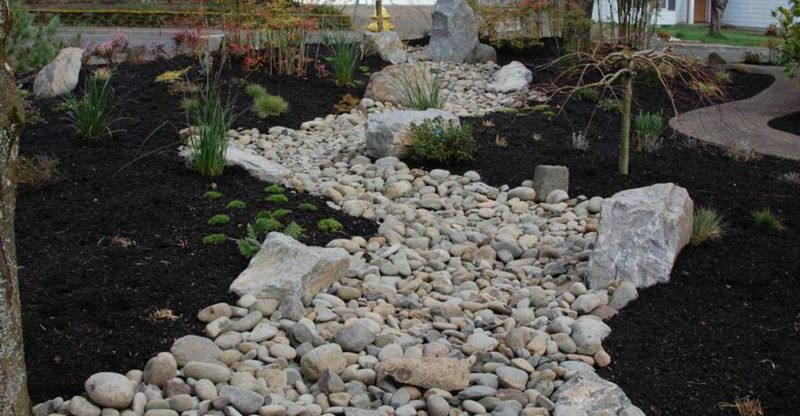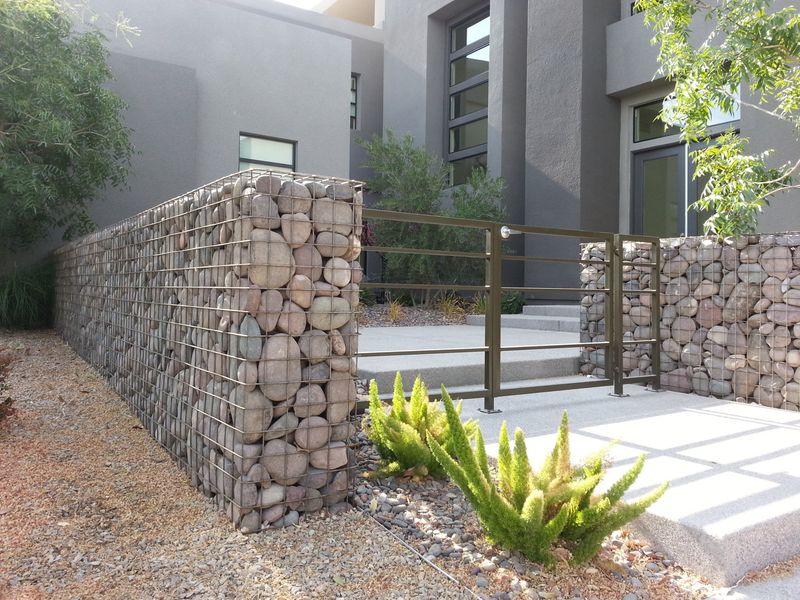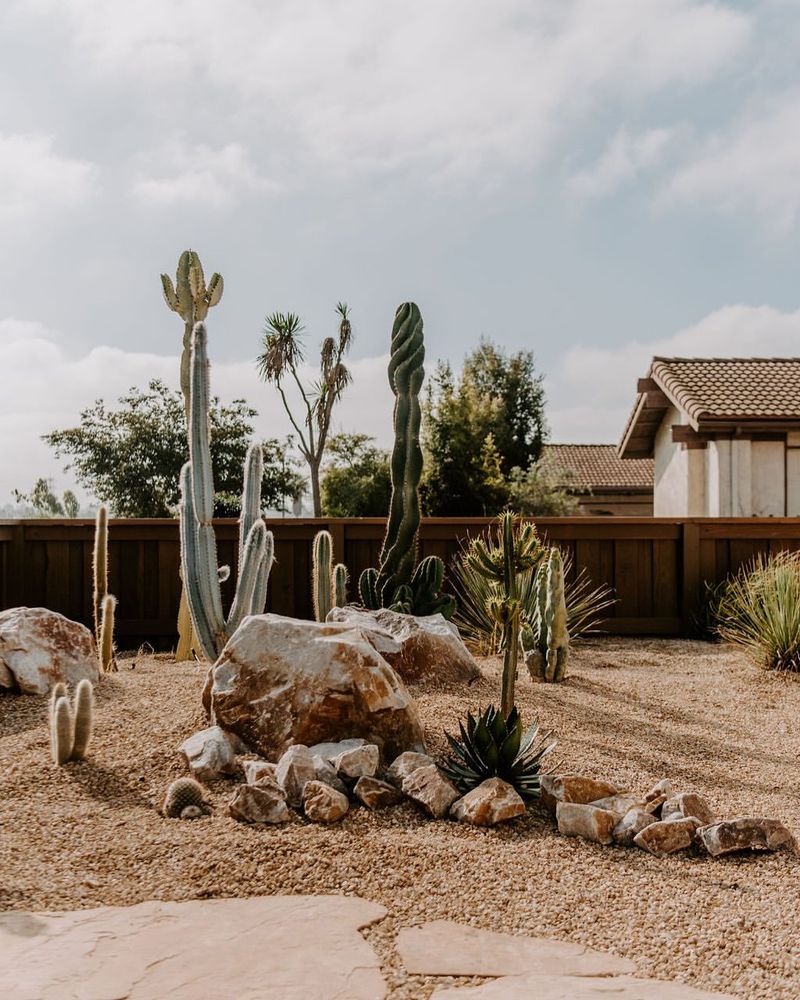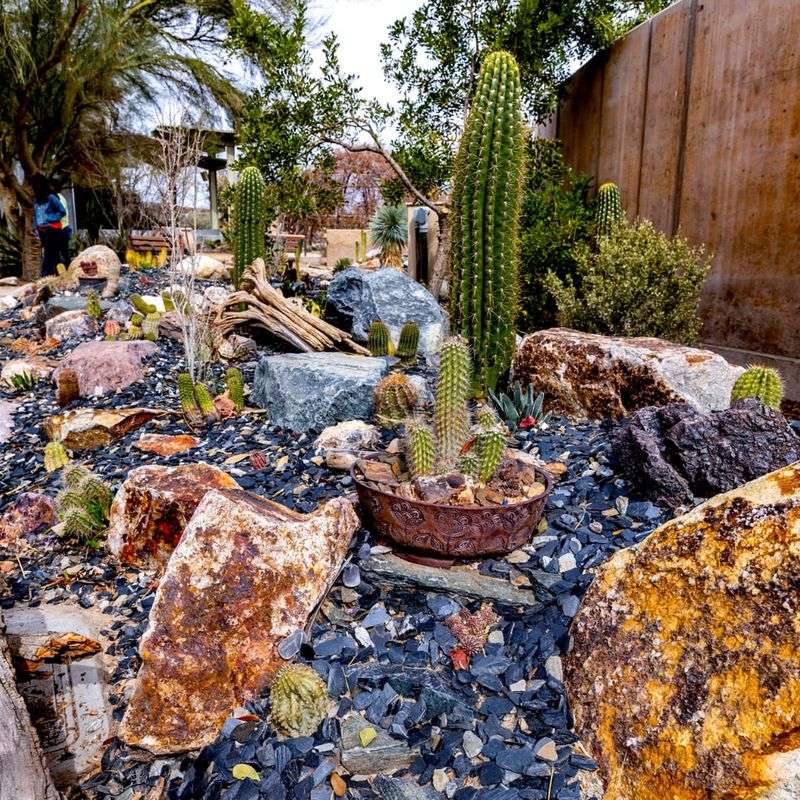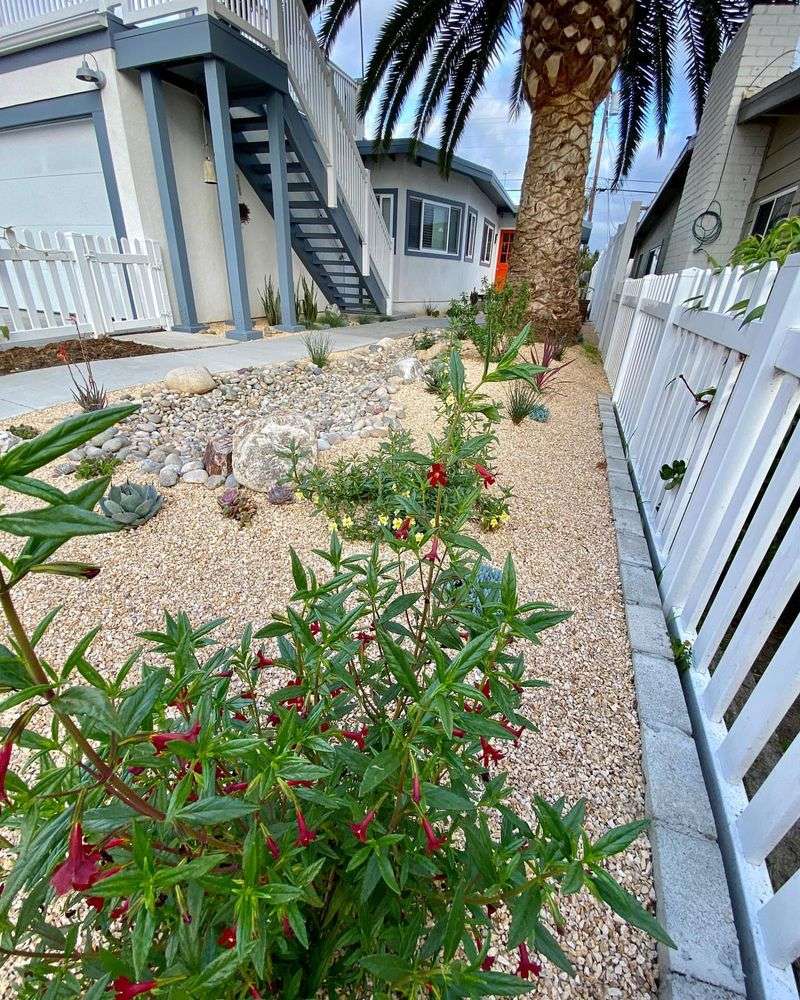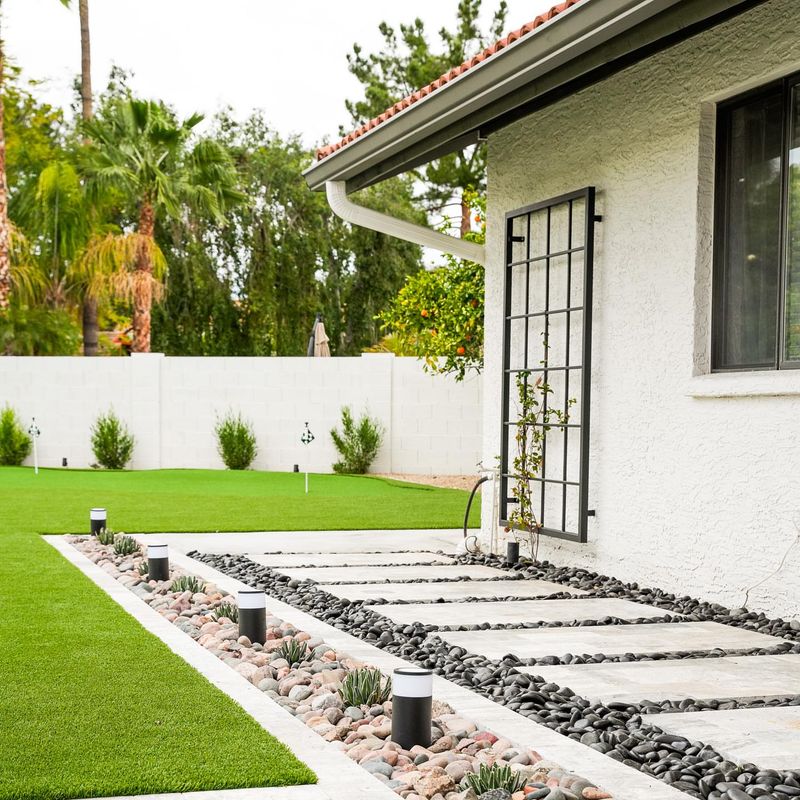Front yard landscaping in Arizona presents unique challenges due to the scorching heat and minimal rainfall.
Rock and mulch designs offer the perfect solution, combining beauty with practicality while minimizing water usage. In my Phoenix neighborhood, nearly every home features some version of rock landscaping—though the results vary wildly in appeal and functionality.
These designs not only withstand Arizona’s harsh climate but can transform a bland yard into a desert showcase that neighbors will envy.
1. Desert Rainbow Rock Layers
Layering different colored rocks creates a stunning rainbow effect that mimics Arizona’s natural canyon landscapes. The gradient typically starts with lighter tans at the bottom, transitioning to rich reds and ending with deep purples or browns.
Separation barriers between colors prevent mixing, which would ruin the effect over time. My neighbor in Scottsdale installed this design five years ago, and it still looks freshly done with minimal maintenance.
For best results, use angular rocks rather than rounded ones—they stay in place better during those rare but intense desert rainstorms.
2. Sonoran Dry Creek Bed
Creating a faux creek bed with smooth river rocks adds dimension to flat Arizona yards. Position larger boulders along the edges with smaller pebbles in the center, mimicking a natural waterway that once flowed through the property.
During monsoon season, these designs actually function as drainage solutions, directing water away from your foundation. My sister added one to her Tucson home after dealing with flooding issues for years.
Choose rocks with varied sizes between 2-8 inches for the most natural appearance, and consider adding a small footbridge for dramatic effect.
3. Red Lava Rock Borders
Red lava rock creates striking borders around cacti and native plant groupings. The porous texture holds moisture longer than other rocks, benefiting nearby plants while the vibrant color pops against Arizona’s blue skies.
Unlike smooth rocks, lava rock stays put during wind storms—a major plus for Mesa residents who deal with dust devils. The only downside? It can be rough on bare feet if you’re the type to wander your garden in the early morning.
For a more sophisticated look, pair with black mulch in alternating sections rather than mixing the materials together.
4. Geometric Gravel Patterns
Modern homes in Scottsdale showcase geometric patterns created with different colored gravels. Think squares, triangles, or zigzag patterns that create an artistic statement visible even from the street.
Metal edging keeps the designs crisp and prevents gravel migration. When I installed this in my courtyard, I discovered that ¾-inch gravel works best—smaller pebbles blow away in strong winds, while larger ones make the pattern less defined.
Maintenance involves occasional raking to restore the pattern and yearly touch-ups with fresh gravel to maintain color vibrancy against the relentless Arizona sun.
5. Desert Moonscape With White Rocks
White marble chips create a moonlike landscape that stays remarkably cool even in July’s brutal heat. The reflective quality bounces sunlight back rather than absorbing it, reducing overall yard temperature.
Contrast is key—plant dark green agaves or purple prickly pear varieties against this backdrop for maximum visual impact. I walked past a home in Chandler using this approach and had to stop and take photos, it was that striking.
Fair warning though: white rock shows dirt quickly, so you’ll need to rinse it occasionally or invest in a leaf blower to keep it looking pristine.
6. Terraced Rock Garden
Sloped front yards transform into stunning terraced displays using retaining walls filled with different rock types. Each level can showcase different desert plant groupings, creating a dimensional landscape that maximizes limited space.
Low walls built from local stone blend naturally with the environment while controlling erosion during heavy rains. My cousin’s terraced yard in Sedona has become the neighborhood showcase, especially when his yucca plants send up their dramatic flower stalks.
For stability, ensure each terrace slopes slightly backward, allowing water to collect rather than run off.
7. Copper Crushed Rock Accent Zones
Copper-colored crushed rock creates warm focal points that echo Arizona’s mining heritage. The rich, metallic tones particularly shine in late afternoon sun, giving your landscape a golden hour glow all day long.
These accent zones work beautifully around specimen cacti or as pathway borders. Having tried several colors in my Gilbert yard, I’ve found copper tones fade less than reds and complement both modern and Spanish-style architecture.
Spray the rocks with clear matte sealer every few years to maintain their rich color against the bleaching desert sun.
8. Pebble Mosaic Entrance Path
Entrance paths crafted from pebble mosaics turn functional walkways into artistic statements. Designs typically feature southwestern motifs like sun patterns, lizards, or geometric tribal designs embedded in concrete.
Smooth, flat river rocks in contrasting colors create the most successful patterns. After moving to Flagstaff, I created a simple sunburst pattern that has weathered five years of foot traffic beautifully.
For longevity in Arizona’s extreme temperature fluctuations, ensure the concrete base is at least three inches thick with proper expansion joints every few feet.
9. Black Star Gravel With Succulents
Black star gravel provides dramatic contrast for colorful succulent collections. The angular, dark backdrop makes even subtle plant coloration pop—especially the blues and silvers common in drought-tolerant varieties.
Unlike rounded pebbles, star gravel stays put during storms and doesn’t easily migrate onto sidewalks. When I redid my Tempe front yard, several neighbors asked where I found this distinctive material after seeing how it showcased my echeveria collection.
Keep in mind that dark rocks absorb heat, so this design works best in areas with afternoon shade or paired with established trees.
10. Decomposed Granite Pathways
Decomposed granite creates natural-looking pathways that feel at home in desert landscapes. Available in colors from gold to rose to gray, this material compacts over time while still allowing water penetration to underground roots.
Unlike hard paving, these pathways reduce water runoff and heat reflection. After installing a gold-toned path through my Queen Creek yard, I noticed birds actually prefer to gather there during hot afternoons.
Add a stabilizer product when installing to prevent erosion and track-in during Arizona’s monsoon season—otherwise you’ll be sweeping granite off your floors constantly.
11. River Rock Rain Harvesting Basin
Smooth river rocks create beautiful rain harvesting basins that collect precious rainfall during monsoon season. Strategically placed depressions direct water toward plant roots rather than allowing runoff to sidewalks and streets.
Larger cobbles slow water flow, allowing more absorption time. My Glendale neighbor’s harvesting basin transformed his struggling palo verde tree into a magnificent specimen after just one rainy season.
For maximum effectiveness, position these basins at downspout locations and connect them with subtle swales that direct water throughout your landscape.
12. Crushed Glass Mulch Accents
Recycled crushed glass mulch creates sparkling accents that catch Arizona’s abundant sunlight. Available in cobalt blue, amber, and green, these sustainable accent areas add unexpected color pops among traditional rock landscaping.
Unlike organic mulches that decompose quickly in our heat, glass mulch remains vibrant for years. The most stunning installation I’ve seen used cobalt blue glass around the base of a mature Joshua tree in a North Phoenix yard.
Safety tip: choose tumbled glass mulch with rounded edges rather than sharp fragments, especially if you have pets or children.
13. Gabion Rock Wall Features
Wire-enclosed rock walls (gabions) create striking modern features while solving erosion problems on sloped yards. These permeable structures allow water flow while holding soil in place—perfect for Arizona’s occasional but intense rainstorms.
Fill with locally-sourced stone for a natural look that blends with the surroundings. After seeing them at the Desert Botanical Garden, I installed a small gabion wall in my yard using rocks collected from my property in Gold Canyon.
For visual interest, mix stone sizes or incorporate glass chunks that catch the light among the rocks.
14. Zen Desert Rock Garden
Inspired by Japanese zen gardens but adapted for desert conditions, these minimalist designs use raked gravel patterns around carefully placed boulders. The flowing lines create a sense of water movement without actual irrigation needs.
Choose a single rock color in a fine grade that holds rake patterns well. The most peaceful front yard I’ve encountered in Paradise Valley used this approach with light beige gravel and three large, weathered boulders.
Maintenance involves occasional raking to refresh patterns and remove debris, making this an ideal low-maintenance option for seasonal residents.
15. Cactus Spotlight Gravel Rings
Concentric rings of contrasting gravel colors create spotlight effects around statement cacti. The circular patterns draw the eye to specimen plants while defining distinct zones in the landscape.
Metal edging keeps the rings crisp and separated, preventing material migration. When I toured the Carefree garden tour last spring, the most photographed yard used this technique with three colors radiating around a magnificent saguaro.
For best results, choose colors that complement rather than match your home’s exterior—this creates a more sophisticated, designed look rather than a matchy-matchy effect.
16. Desert Arroyo Simulation
Mimicking natural desert arroyos, this design uses varying sizes of rock to create dry streambeds that look like they’ve been carved by centuries of water flow. Large, smooth boulders anchor the edges while smaller cobbles fill the center.
Native plants that naturally grow along washes—like desert willows and brittlebush—complete the natural look. The most authentic version I’ve seen was in a Cave Creek yard where the designer studied actual arroyos before recreating the pattern.
During rare heavy rains, these features actually function as drainage systems, directing water flow away from structures.
17. Sunset-Inspired Color Gradient
Capturing Arizona’s famous sunsets, this design uses a gradient of rock colors from golden yellow to orange to deep red. The transition creates a warm, glowing effect that’s particularly stunning in late afternoon light.
Small, crushed rock works best for these gradients as the smaller pieces blend more naturally at transition points. After experimenting with different rocks in my Sun City yard, I found that pre-washing the material helps show its true color before installation.
Consider your home’s paint color when selecting your gradient—this design looks particularly striking against white or neutral-colored houses.

